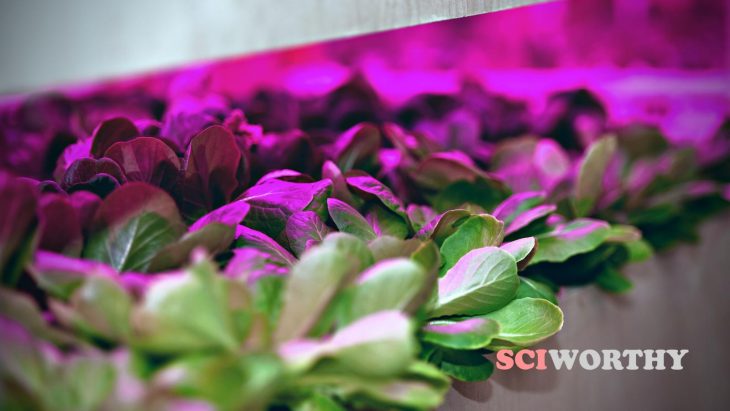Since The Space Age began in the 1960’s, leading scientists have believed that plants will someday be crucial for human space travel. Astronauts will need to be part-time farmers when they establish settlements on other planets. There’s just one problem: when we get to Mars, there will not be enough sunlight to grow crops.
Plants need light to grow, and when sunlight isn’t enough (like on Mars or on many indoor farms and greenhouses across the world), farmers’ only option is to use electric light fixtures, “grow lights”. Some indoor or greenhouse farmers use a mix of grow lights and sunlight, like in greenhouses that are outfitted with electric lights. This way, indoor farmers use cheap sunlight to grow plants, and only turn on the electric lights when absolutely necessary. But even this method has its downsides, including the costs of light fixtures and electricity. No matter what indoor and greenhouse farmers try, lighting costs remain expensive, making our food more expensive too.
Therefore, scientists and engineers across the world have been seeking ways to grow crops more efficiently with novel lighting technologies. One team of scientists from the University of Arizona has recently been testing quantum dots, to see if this microscopic technology could make it more efficient to grow food on Earth and on Mars.
Quantum dots are synthetic crystals that are only a few nanometers across, comparable in size to the width of a DNA strand. They are a relatively new technology, and their uses are still being explored. In the research team’s recently published paper, ‘Optimizing spectral quality with quantum dots to enhance crop yield in controlled environments’ they performed experiments to see whether quantum dots could improve light for farming.
In their paper, the scientists describe quantum dots as arranged in a sheet, embedded in a resin film. When light shines through this film, the light particles (photons) are slowed down, and the color of the light changes. There are many types of quantum dots which create a rainbow of different colors, but this research uses quantum dots that can change ultraviolet radiation into red or orange light.

Quantum Dots. Source: Prof. Michael S. Wong, CC BY-SA 3.0, via Wikimedia Commons
Why does this help plants? Plants can capture energy from many colors of light, but they cannot use energy from ultraviolet radiation. By turning ultraviolet radiation into red or orange light, these scientists are making “unusable” light into “usable” light for plants. This “light filtering” quantum dot technique could potentially improve yields in greenhouses–that is, if it actually works.
For this experiment, the researchers grew lettuce plants in a custom-built plant growth chamber, a box designed to maintain a very uniform growing environment. Plants were grown under three different treatments: ‘normal’ white light, ‘normal’ light with an orange quantum dot filter, and ‘normal’ light with a red quantum dot filter. By maintaining the same environmental conditions–same temperature, same humidity, same hydroponics, etc.–the researchers designed this experiment so that they could easily determine whether the quantum dots made any difference in yield.
Their results were an exciting ‘yes’, quantum dots did improve plant growth. Although the quantum dot filters made the light a little bit less intense, the lettuce under the quantum dots had higher yields (10% more fresh mass) and greater productivity than the plants under the “normal” light treatment. Additionally, the plants under quantum dot films were more efficient at converting light energy into edible material. This is wonderful news because it indicates that we could grow more food from the same amount of sunlight.
Furthermore, in space environments like on Mars there is more ultraviolet radiation than on Earth, and quantum dots could provide even greater yields on space farms. Mars doesn’t get as much sunlight as Earth does, so every extra bit of usable light energy helps.
More research and development must be done, but this data is promising. If quantum dots can be integrated into durable sheets that are easy and affordable to use in greenhouses, they could improve productivity in farms on Earth. Farms are supporting almost 8 billion people, and technological advancements, like quantum dots, are vital to support our growing population. And when future generations look to the sky, quantum dots may help us expand the reach of humanity.


